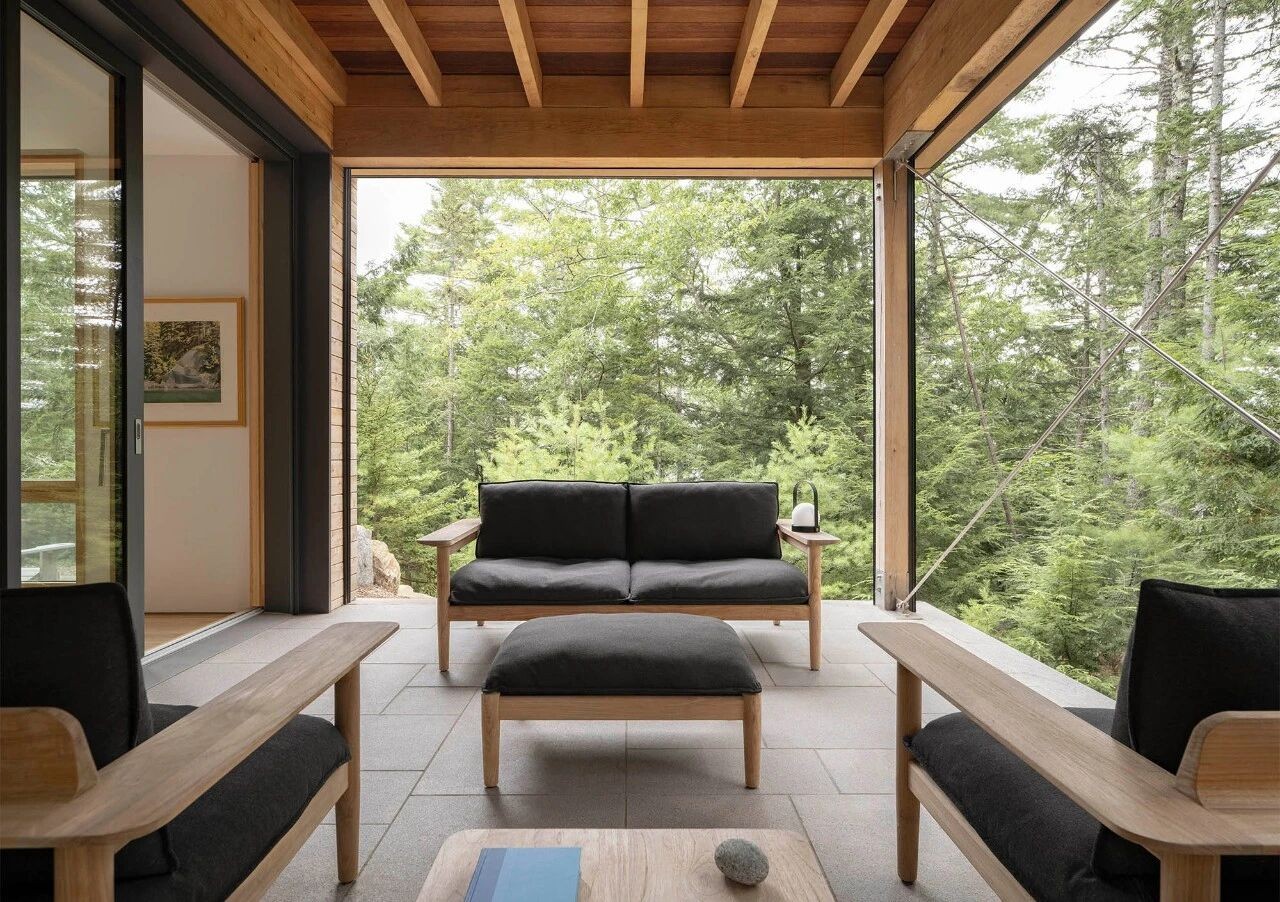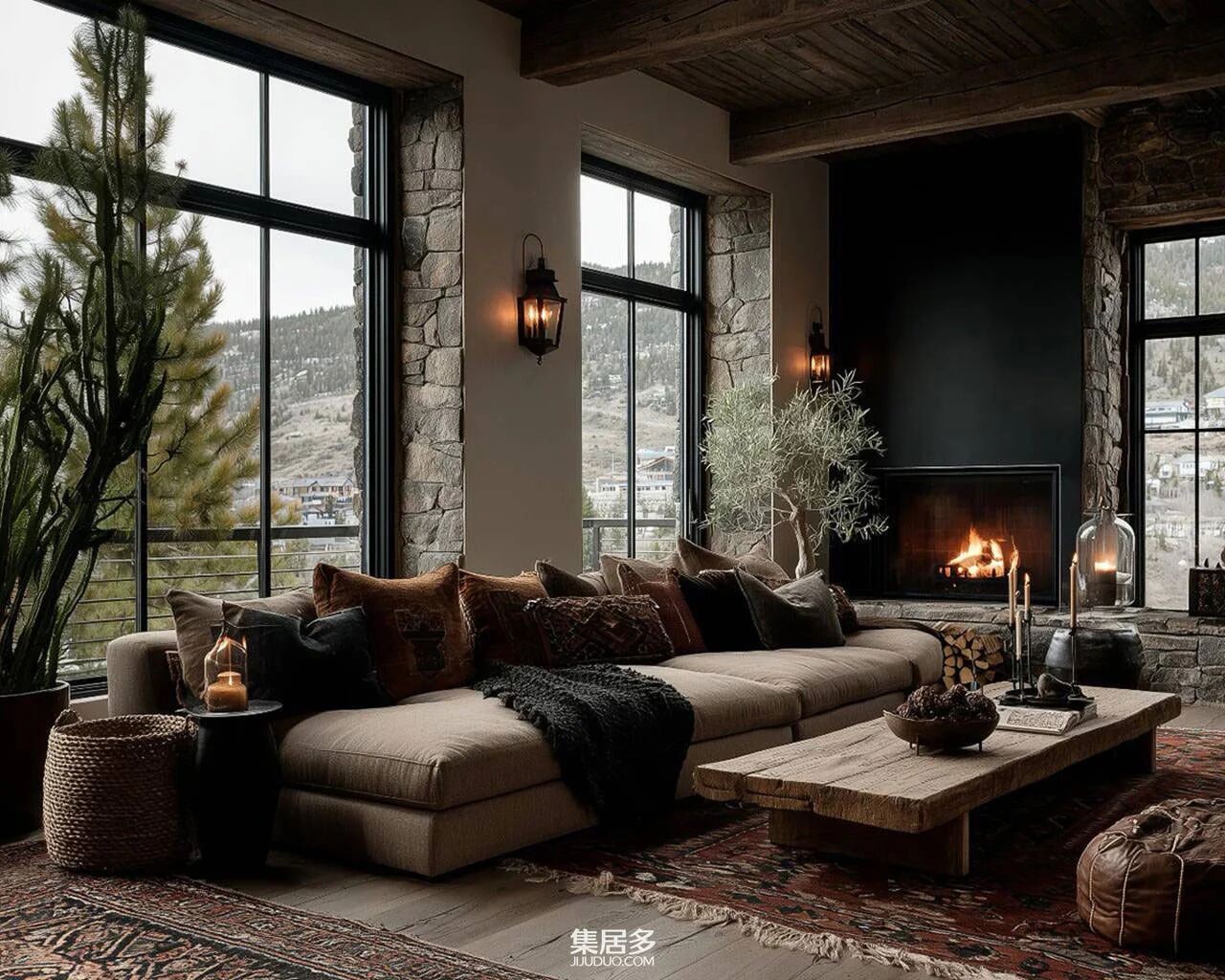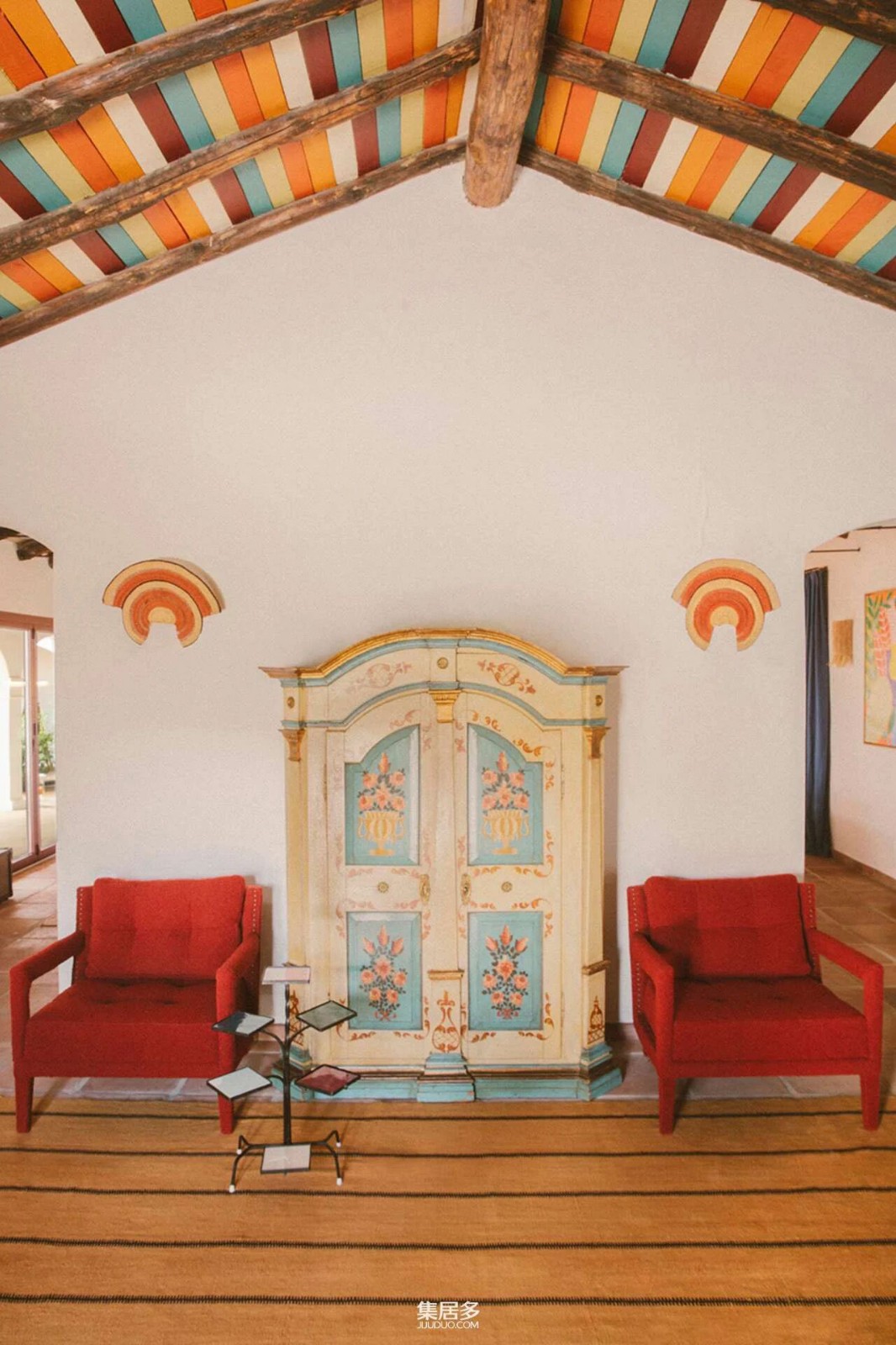Villa in the Palms / Abraham John Architects
2019-01-07 15:15
Project: Villa in the Palms Architects: Abraham John Architects Project location: Sangolda, Goa, India Design Team: Abraham John, Alan Abraham, Anca Florescu, Neha Gupta, Niranjan Fulsundar, Vatsal Mistry Completion Year: 2018 Gross Built Area: 610sqm Structural Consultant: BL Manjunath Photo credits: Edmund Sumner, Atul Pratap and Alan Abraham Winner: International Property Awards 2018 Winner: Architecture Masterprize 2018
项目:棕榈树建筑师中的别墅:亚伯拉罕·约翰建筑师项目地点:桑格尔达,果阿,印度设计团队:亚伯拉罕·约翰、艾伦·亚伯拉罕、安卡·弗洛雷斯库、尼哈·古普塔、尼兰詹·富隆达尔、瓦特萨尔·密斯特里建筑竣工年:2018年建筑总建筑面积:610平方米建筑顾问:埃德蒙·苏姆纳、阿图尔·普拉塔普和艾伦·亚伯拉罕获得2018年国际房地产奖得主:2018年建筑大师奖
Villa in the Palms is named after the 19 towering coconut palms that thrived for decades on the land, which dictated the villa’s concept and footprint. This four-bedroom house overlooks a field and a seasonal stream.
棕榈中的别墅以19座高耸的椰树命名,在陆地上生长了几十年,这决定了别墅的概念和足迹。这四居室的房子可以俯瞰一片土地和一条季节性的溪流。
Embedded into the natural landscape, Villa in the Palms appears almost village-like, pockets of small homes nestled between 80-year-old coconut trees, nearly invisible from points further up the approach road. The fact that the trees on site existed for decades gives the overall house a very rooted presence.
嵌入到自然景观中,棕榈树中的别墅看起来几乎像村庄一样,小房子的口袋就坐落在有着80年历史的椰子树之间,从更远的道路上看几乎看不见。当地的树木已经存在了几十年,这一事实给了整个房子一个非常根深蒂固的存在。
Design Concept - Process The studio’s design approach is to reconnect architecture with nature. Designing a regular building block would have required the cutting down of several trees to accommodate the programme. To avoid this, the building was carefully designed between the trees, without disrupting the surroundings, and not a single tree was felled during construction.
Consequently, the structure is fragmented rather than monolithic, reminiscent of an old-time Goan village but at the same time entirely modern. Each bedroom on the ground floor, for example, feels like a separate home, replete with an en-suite bathrooms, a rear garden, a front garden and an internal courtyard flanked by laterite walls. These independent volumes are interconnected with decks, passages and bridges that meander through the trees and over pools and gardens.
因此,这种结构是支离破碎的,而不是一体式的,让人想起一个古老的果南村,但同时也完全是现代的。例如,一楼的每个卧室,感觉就像一个独立的家,里面充满了一个独立的浴室、一个后花园、一个前花园和一个由红土墙环绕的内部庭院。这些独立的体积是相互连接的甲板,通道和桥梁蜿蜒穿过树木和池塘和花园。
The building design adopts distinct local features and materials of the tropical coastal state of Goa, with exposed local laterite stone walls, sloping roofs and screens made from 100-year-old recycled teak wood, while the landscape design consists of local tropical species (mostly various types of palms) that maintain their lush greenery through the year.
建筑设计采用热带沿海地区果阿独特的地方特色和材料,外露的当地红土石墙、倾斜屋顶和用百年历史回收的柚木制成的屏风,而景观设计则由当地热带植物(主要是各种类型的棕榈树)组成,全年保持着茂盛的绿色植物。
Roofs pitched at different angles pay homage to the monsoons and accentuate the staccato nature and fragmented aesthetic of the building. The interstitial roofs which cap each unit individually harvest rainwater, while further visually integrating the building in the lush landscape. Boundaries between the inside and outside are blurred and vast open spaces connect each living space.
不同角度的屋顶向季风致敬,强调建筑的断续性和支离破碎的美学。隔间屋顶分别覆盖每一个单元,收集雨水,同时在茂盛的景观中进一步可视化地整合建筑物。内外之间的界限是模糊的,广阔的开放空间连接着每个生活空间。
While everything is open and filled with light and air, the Villa in the Palms is still very private. The laterite walls thermally and visually shield each room, maintaining privacy while orienting for the best views of the northern field. The Northern façade on the other hand opens with large recessed glazing to the fields while not increasing the solar gain.
虽然一切都是开放的,充满了光和空气,别墅在棕榈仍然是非常私密的。红土墙在热和视觉上屏蔽每一个房间,保持隐私,同时为北方的最佳景观定位。另一方面,北立面打开,大凹的玻璃在田野上,但没有增加太阳的增益。
With the thermal mass of the laterite walls, open northern facades - open internal courtyards, the Villa in the Palms creates and is designed to be environmentally responsive to its siting, sustainable as far as a private home can be, while respecting the local environment and geography.
The main entrance features a kind of dramatic crescendo, with a view that widens with each footstep – first some exposed laterite stone, then a glimpse of the pool, then the gardens and finally the wide field beyond. At one side is a sky-lit living room with internal garden and walls of exposed masonry. At the other side is an open kitchen and dining room featuring a wet bar, all overlooking an expansive deck and pool (three distinct water bodies are separated by teak-wood bridges and tree islands). The infinity swimming pool is fully integrated with the villa, dividing the semi-private areas from the private ones.
主入口有一种戏剧性的新月形,每走一步就能看到开阔的视野-首先是一些露的红土石,然后是池水,然后是花园,最后是远处广阔的田野。一边是一间灯火通明的起居室,里面有花园和裸露的砖石墙。另一边是一个开放式厨房和餐厅,设有一个酒吧,可以俯瞰宽阔的甲板和游泳池(三个不同的水体被柚木桥和树岛隔开)。无限大游泳池与别墅完全结合,将半私人区域与私人区域分开。
A bedroom abuts the pool, with a slit window along the floor that enables the ripples of water to reflect onto the ceiling. All the lower floor bathrooms have in-built sunken bath tubs to enjoy the adjoining courtyard landscapes. The last bedroom features a serene indoor-outdoor bathroom where light and shadow create everchanging landscapes.
一间卧室紧靠着游泳池,地板上有一扇狭缝的窗户,使水的涟漪可以反射到天花板上。所有较低楼层的浴室都有内置的沉陷浴缸,以欣赏毗邻的庭院景观。最后一间卧室有一个宁静的室内-室外浴室,在那里光线和阴影创造了不断变化的景观。
On the upper floor there is a family room, powder room, top-floor garden and an exquisite master suite. The latter consists of a bedroom and an open library, with a windowed “sky bridge” separating the bedroom from a walk-in closet and large master bathroom. The views from upstairs consist not only of the open field to the north, but also a “Goan jungle view” to the south, replete with red-tile rooftops of the adjoining village.
上一层有一个家庭房、化妆间、顶层花园和一个精致的主套房。后者由卧室和开放的图书馆组成,有开窗的“天桥”,将卧室与步入式衣柜和大的主浴室隔开。楼上的景色不仅包括北方的开阔场地,而且还包括到南部的一个“戈林丛林视图”,充满了毗邻村庄的红砖屋顶。
 举报
举报
别默默的看了,快登录帮我评论一下吧!:)
注册
登录
更多评论
相关文章
-

描边风设计中,最容易犯的8种问题分析
2018年走过了四分之一,LOGO设计趋势也清晰了LOGO设计
-

描边风设计中,最容易犯的8种问题分析
2018年走过了四分之一,LOGO设计趋势也清晰了LOGO设计
-

描边风设计中,最容易犯的8种问题分析
2018年走过了四分之一,LOGO设计趋势也清晰了LOGO设计


























































